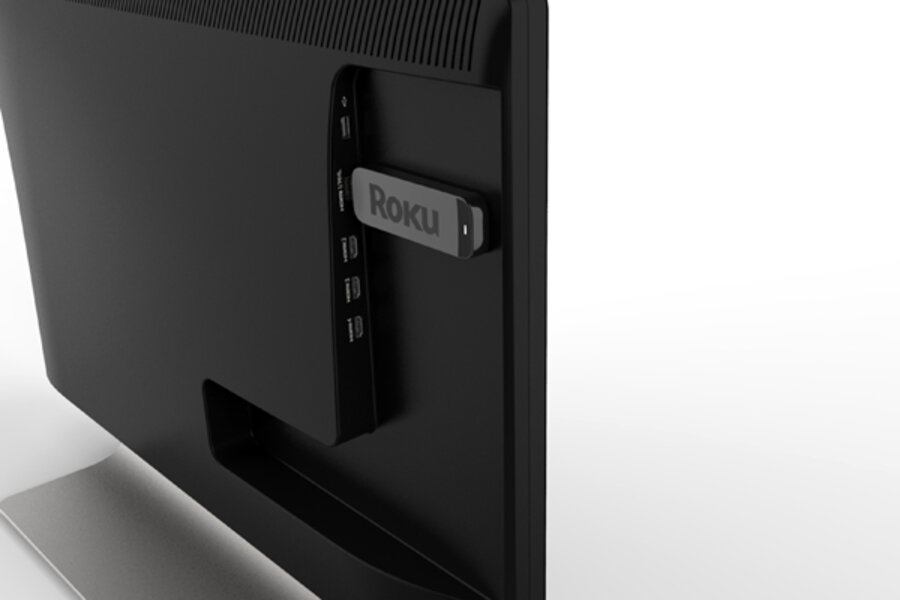Roku Streaming Stick: 400 channels of video, zero wires
Loading...
Back in 2008, Roku introduced the Roku DVP -- a small (for the time) set-top box that brought Netflix streaming to the masses. In November 2011, it rolled out the Roku LT, a smaller device that allows users to pull video from all sorts of online sources. (The LT ranked among the Monitor's favorite gadgets of 2011.) Now, Roku has announced an even slimmer streaming solution: it’s a stick about the size of a thumb drive.
The Roku Streaming Stick plugs directly into a TV’s HDMI port and pushes hi-def video to your screen over Wi-Fi. No need for wires, or even for a monthly subscription (unless you’re using Netflix, Hulu Plus, or similar paid services). Details are still murky, but Roku apparently plans to offer a few versions of the stick, with prices ranging from $50 to $100.
The Streaming Stick uses a protocol called Mobile Hi-Def Link, or MHL, which lets it draw power and connectivity right from the HDMI port. There aren’t a whole lot of MHL-capable TVs out there right now, but support is growing and the specification should be widespread before too long (it’s already being adopted by Sony, Samsung, and Toshiba, as well as the Best Buy brand Insignia).
In spite of its size, the Streaming Stick has the functionality of a standard set-top box like the Apple TV or the Boxee Box -- including flash storage, Wi-Fi, and an on-screen interface. The stick offers access to Roku’s web platform, which allows users to pull in movies, TV shows, Web video, and all sorts of other content from more than 400 channels. Roku says the Streaming Stick will be available within about six months, and will be sold on its own as well as bundled in with some TVs sold at Best Buy.
Why is this such a big deal, if MHL-capable TVs aren’t widely available? After all, lots of higher-end TVs ship with streaming features already built in. But as Roku points out, TVs are used for six to eight years on average – and manufacturers aren’t likely to offer software updates for the duration. Roku promises to support its products for a longer period of time, and if your Streaming Stick does become obsolete down the road, shelling out for a newer model is probably going to be a lot cheaper than buying a new TV.
Readers, what do you think? Are you tempted by the Roku Streaming Stick, or are you already happy with another set-top box? Do you think the stick will be a hit? Let us know in the comments – we’re listening.
For more tech news, follow us on Twitter @venturenaut. And don’t forget to sign up for the weekly BizTech newsletter.







